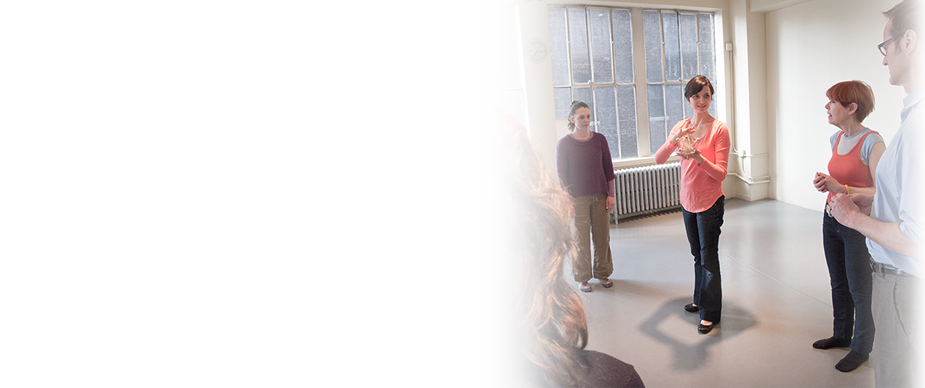Posture on a Post-It
/Good evening! Did you know that post-Its are really good for your posture?
Keep reading to find out what to do with this post-it...including a tip for remembering to think about your posture when using your phone.
Alexander Technique lessons can help us make dramatic changes in terms of how we look and feel. By dramatic, I mean helping us overcome postural habits that we may have just assumed were there to stay or were so part of "who we are" that we hadn't even noticed them. There are two major components to making these sorts of changes...
1) Taking lessons - so you can figure out what's going on and get a physical sense of how it can be different.
2) Working on your own - meaning paying attention during your daily activities so that you can integrate what you learn during your lessons into what you do in your life outside of the lessons.
Jessica Chou, a Refinery29 writer, worked with me to create her own "posture challenge", which she shared with readers. Click here to read the article. Some key highlights of her process are that she created a simple structure for herself and a few reminders.
Something that appealed to me about the Alexander Technique when I first started taking lessons was that I didn't have to stop and do exercises. I could just incorporate it into being more conscious in everything that I do. The potential pitfall to "everything" though is that it might feel overwhelming or not specific or structured enough to get going.
So, I've started to approach the process in more digestible pieces, like you would if you wanted to make cleaning a messy apartment more manageable. Do a little bit every day and eventually, you'll get to the whole thing.
Good evening! Did you know that post-Its are really good for your posture?
Keep reading to find out what to do with this post-it...including a tip for remembering to think about your posture when using your phone.
Alexander Technique lessons can help us make dramatic changes in terms of how we look and feel. By dramatic, I mean helping us overcome postural habits that we may have just assumed were there to stay or were so part of "who we are" that we hadn't even noticed them. There are two major components to making these sorts of changes...
1) Taking lessons - so you can figure out what's going on and get a physical sense of how it can be different.
2) Working on your own - meaning paying attention during your daily activities so that you can integrate what you learn during your lessons into what you do in your life outside of the lessons.
Jessica Chou, a Refinery29 writer, worked with me to create her own "posture challenge", which she shared with readers. Click here to read the article. Some key highlights of her process are that she created a simple structure for herself and a few reminders.
Something that appealed to me about the Alexander Technique when I first started taking lessons was that I didn't have to stop and do exercises. I could just incorporate it into being more conscious in everything that I do. The potential pitfall to "everything" though is that it might feel overwhelming or not specific or structured enough to get going.
So, I've started to approach the process in more digestible pieces, like you would if you wanted to make cleaning a messy apartment more manageable. Do a little bit every day and eventually, you'll get to the whole thing.
How about some specifics?
The assignment that I give out now to new students is the following:
1) Decide on 3 activities that you generally do every day during which you will think about improving your posture.
2) At first, at least, only concern yourself with remembering during those 3 activities.
3) If you have trouble remembering, choose activities which lend themselves to displaying a reminder. Post-its are helpful for this. Jessica at Refinery29 placed a post-it on her computer. One of my students recently chose "washing dishes" and "brushing teeth" since it would be easy to put up a post-it.
4) Keep a very short journal if you'd like to track what you notice and your progress. Only use a journal if it's helpful and doesn't become a hindrance to doing the exercise.
If you limit yourself to deciding to pay attention to your posture during these three activities, you may just find that you are naturally more conscious during other activities because you've made a point to practice.
TIP for using your phone: Here's one reminder that could make a huge difference: Put a note to yourself on the screensaver of your phone so that you are reminded every time you use it. (That's a lot of time, right?) You could just put up the words, "Think Posture" or a photo of something that will help you to remember.
Feel free to use my post-it photo up top. If your kid, significant other, or best friend hold that spot on your screen saver, how about taking a photo of them holding a "Think Posture" sign?


